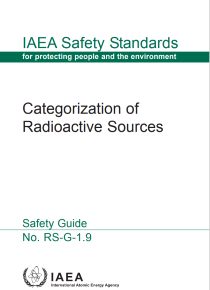Abstract- This report is the first in a series of documents replacing the Publication 30 series and Publication 68 to provide revised dose coefficients for occupational intakes of radionuclides (OIR) by inhalation and ingestion. The revised dose coefficients have been calculated using the Publication 100 Human Alimentary Tract Model (HATM) and a revision of the Publication 66 Human Respiratory Tract Model (HRTM) which takes account of more recent data. In addition, information has been provided on absorption to blood following inhalation and ingestion of different chemical forms of elements and their radioisotopes, in those cases for which it is judged that the data are sufficient to make specific recommendations. Revisions have been made to many models for the systemic biokinetics of radionuclides absorbed to blood, making them more physiologically realistic representations of uptake and retention in organs and tissues and of excretion. The reports in this series provide data for the interpretation of bioassay measurements as well as giving dose coefficients, replacing Publications 54 and 78. In assessing bioassay data such as measurements of whole-body or organ content or urinary excretion, assumptions have to be made about the exposure scenario, including the pattern and mode of radionuclide intake, physical and chemical characteristics of the material involved and the elapsed time between the exposure(s) and measurement. This report provides some guidance on monitoring programmes and data interpretationAbstract- This report is the first in a series of documents replacing the Publication 30 series and Publication 68 to provide revised dose coefficients for occupational intakes of radionuclides (OIR) by inhalation and ingestion. The revised dose coefficients have been calculated using the Publication 100 Human Alimentary Tract Model (HATM) and a revision of the Publication 66 Human Respiratory Tract Model (HRTM) which takes account of more recent data. In addition, information has been provided on absorption to blood following inhalation and ingestion of different chemical forms of elements and their radioisotopes, in those cases for which it is judged that the data are sufficient to make specific recommendations. Revisions have been made to many models for the systemic biokinetics of radionuclides absorbed to blood, making them more physiologically realistic representations of uptake and retention in organs and tissues and of excretion. The reports in this series provide data for the interpretation of bioassay measurements as well as giving dose coefficients, replacing Publications 54 and 78. In assessing bioassay data such as measurements of whole-body or organ content or urinary excretion, assumptions have to be made about the exposure scenario, including the pattern and mode of radionuclide intake, physical and chemical characteristics of the material involved and the elapsed time between the exposure(s) and measurement. This report provides some guidance on monitoring programmes and data interpretation




